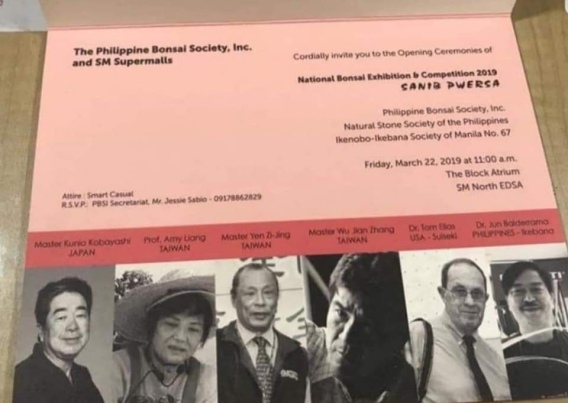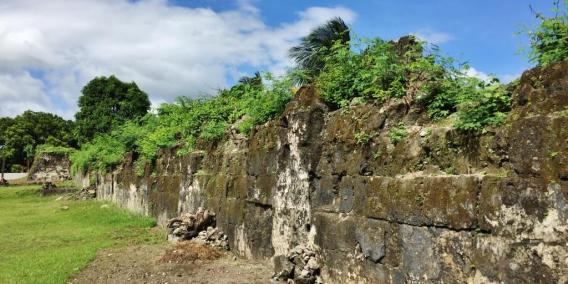
Everyone goes to Baler and back via Pantabangan. It is the easiest route, and the views are scenic – – with 2 dams along the way.
Not so many know that back in the old days, the road to Baler was via Bongabon in Nueva Ecija. In fact, during President Manuel Quezon’s time, the family would take this road to and from Manila. That is why it was also on this stretch of road where then First Lady Dona Aurora was ambushed. A sad footnote, but an important detail to illustrate that back then, Bongabon was the road to Baler. Thus in her honor was created the Aurora Memorial National Park, a protected area within the Sierra Madre mountain range covering parts of Aurora and Nueva Ecija. The road system stretches nearly 71 kilometers from San Luis, with an area (according to Wikipedia) of 5,676 hectares.

Left San Luis at 830am

Baler used to be part of Aurora Sub Province, which was then politically under Quezon Province. Imagine that the people of Baler would then have to go via Nueva Ecija, and then on to Pampanga, Bulacan, Metro Manila, and Laguna before they reach the provincial capitol in Lucena for a transaction with the government? Until of course Aurora became a province unto itself.
Last time I took the road back to Manila from Baler via Bongabon was in 2010, seven years ago. I wrote in my blog then :
Jungle Route vs Scenic Route
Returning to Manila, we decided to take the Bongabon Road from San Luis in Baler. Why? Because the map showed it to be a shorter route. From San Luis, it said 77kms to Bn (Bongabon). Wow, must be a really quick return trip! And the roads were paved. I figured we will be in Nueva Ecija in no time. But it wasn’t meant to be.
The Bongabon route is what I will now call the “Jungle Route”. If you are not on a 4×4 and not adventurous enough, stay with the Pantabangan “scenic route”.
The paved road from San Luis ended way before I could rejoice at the decision to do this shortcut. Soon enough, we were traversing a dirt road carved out of the Sierra Madre, with deep ravines on our right. There were several portions that were so narrow and we had to stop to give way to trucks going up the mountain trail. Most of all, we had to cross two rivers, one was deep and wide enough to make me re-think of the sanity of continuing. But then,this wasn’t the first time my 4×4 was crossing a river, so what the heck. In my mind, I was more worried about the van that we passed early on. It is one of those second-hand vans you can buy for P150,000, and I was sure they will have trouble with their decision to take this jungle route. They probably also had a map, and decided to take this “shortcut”. I was glad I took this route so I can advise non-adventurous friends to stay away, and challenge my daring friends to take this road either to or from Baler.
The Road 7 Years Later ( June 5, 2017)
Just the other day, I was in Baler from another route – – via Quirino Province. It was also some adventure. Thus, to complete the adventure, I decided to try what I then called the Jungle Route to Manila via Bongabon. Bummer. It was, after 7 years, a concrete road – – – or at least around 85% of the way.

Left San Luis, the town after Baler at 830am. Entered the Dona Aurora Memorial National Park and was out of it by 11am, on a very leisurely drive, with some stops for photos and a stop at the marker of the site where Dona Aurora was ambushed. Thus, 2 1/2 hours for a distance of 71 zigzagging kilometers with portions of dirt roads.



the historical marker. I was there when this was unveiled by the National Historical Institute a few years ago.

This is obviously a low-traffic road such that dogs feel like they own the road. I must have spotted nearly 50 dogs on the route, with some of them comfortably lying down right in the middle of the road. This one I chanced upon (my cam was not always on) was, at least, on the side of the road.

Yes, there are still some portions that remain unpaved. Or maybe the concrete must have been washed away by landslides. Most likely, the unpaved portions will be done after cutting up portions of the mountain to widen the road, as most of the road system from San Luis to Bongabon are now wide. And there are plenty of spots and opportunities to stop and soak in the beauty of the forest.

Stop and marvel at the forest



Avoid the road after a typhoon as landslides could block the road






51kilometers to Bongabon, Nueva Ecija
There was only one point where my 4×4 crossed a narrow a shallow river, but only because the bridge was still being put up. In sharp contrast with my previous trip on this route where crossing rivers and streams was “normal”.

Crossing the shallow river

and up into a dirt road
Methinks that even when DPWH finishes all work, this route will forever be under repair. The terrain is just so different and prone to mudslides and land slides. Mental note to self : avoid this route after a really heavy downpour. Or be stuck when trees and earth block the road.

Otherwise, this is a route I can now take anytime. A welcome change from the usual Pantabangan-Baler way.
I strongly suggest you try this route.
P.S. On way home, we stopped in Zaragoza in Nueva Ecija, and had a wonderful lunch in a roadside carinderia. My driver and I ordered one steaming hot palayok of pink salmon, one sizzling plate of pork belly, and one sizzling plate of dinakdakan (an Ilocano delicacy made of pork and liver). Plus three (3) orders of rice, and 2 bottles of Mountain Dew softdrinks? Guess how much we paid.


After the meal, I was guessing how much the bill wpuld be, and I flashed it on facebook and asked friends how much the bill would be. Some guessed as much as P680, with others itemizing how much each item was to come up with a good estimate. And almost no one believed that the sumptuous meal cost us only P295.
I thoroughly enjoyed the meal, and the Baler-Bongabon Roadtrip

.
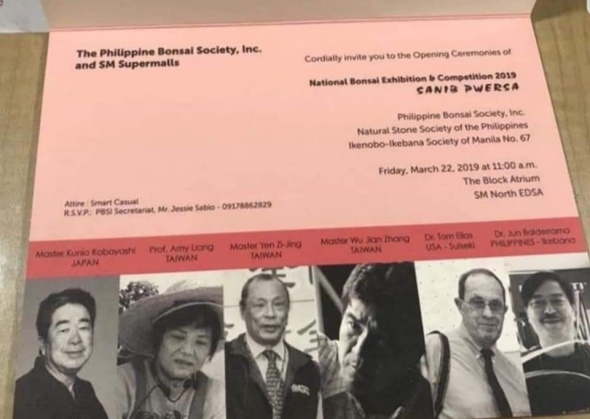 Dubbed as Sanib Pwersa, the exhibit will feature around 200 bonsai trees from the members of the Philippine Bonsai Society, the country’s premiere and most prestigious bonsai club.
Dubbed as Sanib Pwersa, the exhibit will feature around 200 bonsai trees from the members of the Philippine Bonsai Society, the country’s premiere and most prestigious bonsai club.  PBSI is the lead organization, having mounted huge bonsai and suiseki (viewing stones) exhibitions and conventions annually, including exhibits hosted for the international organization called Bonsai Clubs International (BCI), regional conventions for ASPAC and for ABFF, plus national shows every year.
PBSI is the lead organization, having mounted huge bonsai and suiseki (viewing stones) exhibitions and conventions annually, including exhibits hosted for the international organization called Bonsai Clubs International (BCI), regional conventions for ASPAC and for ABFF, plus national shows every year.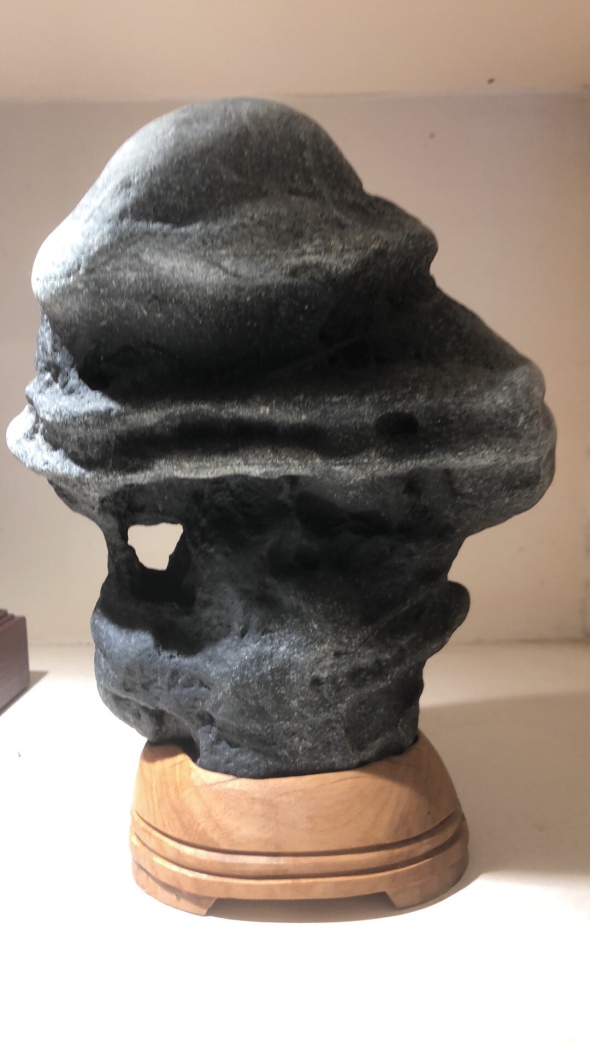
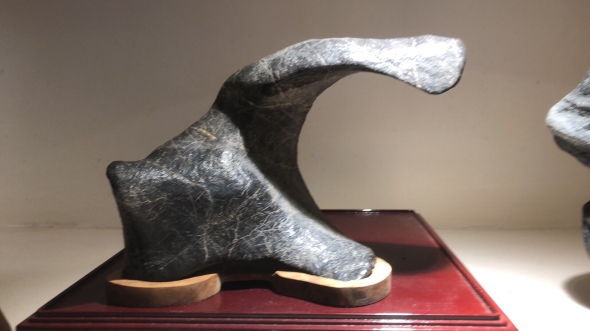
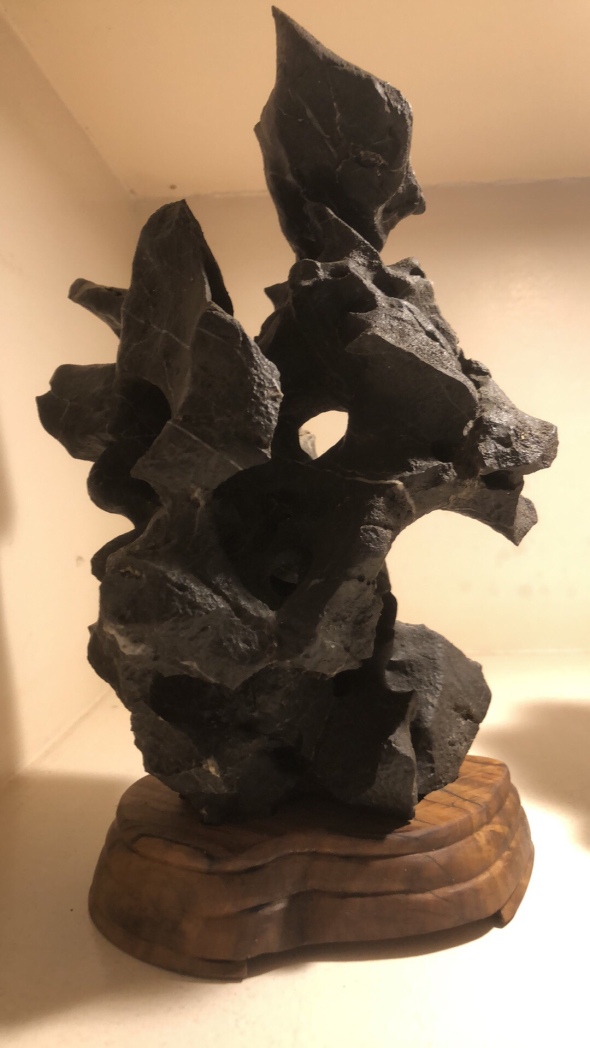 The exhibit and competition will be judged by an international panel of masters and experts from Taiwan, Japan and the USA.
The exhibit and competition will be judged by an international panel of masters and experts from Taiwan, Japan and the USA.  Bonsai Master Yen, from Taiwan is one of the judges, alongside another Taiwan master and another master from Japan, Kunio Kobayashi.
Bonsai Master Yen, from Taiwan is one of the judges, alongside another Taiwan master and another master from Japan, Kunio Kobayashi.

